The Williams Formula 1 team celebrates 750 grands prix in Monaco this weekend – a stretch that has covered absolutely everything from dominant championship glory to tragedy, and all points in between.
Objectively speaking, the titles won are the outright highs while the life-changing injuries suffered by team founder Frank Williams in 1986 and then the death of Ayrton Senna in 1994 are of course the lowest ebbs.
But a team with a history like this inspires a lot of emotions. To mark Williams’s latest milestone race, our writers reflect on their personal best and worst Williams moments from their time both following it as F1 fans and covering it as journalists.
HIGH: Montoya shakes up F1
Matt Beer
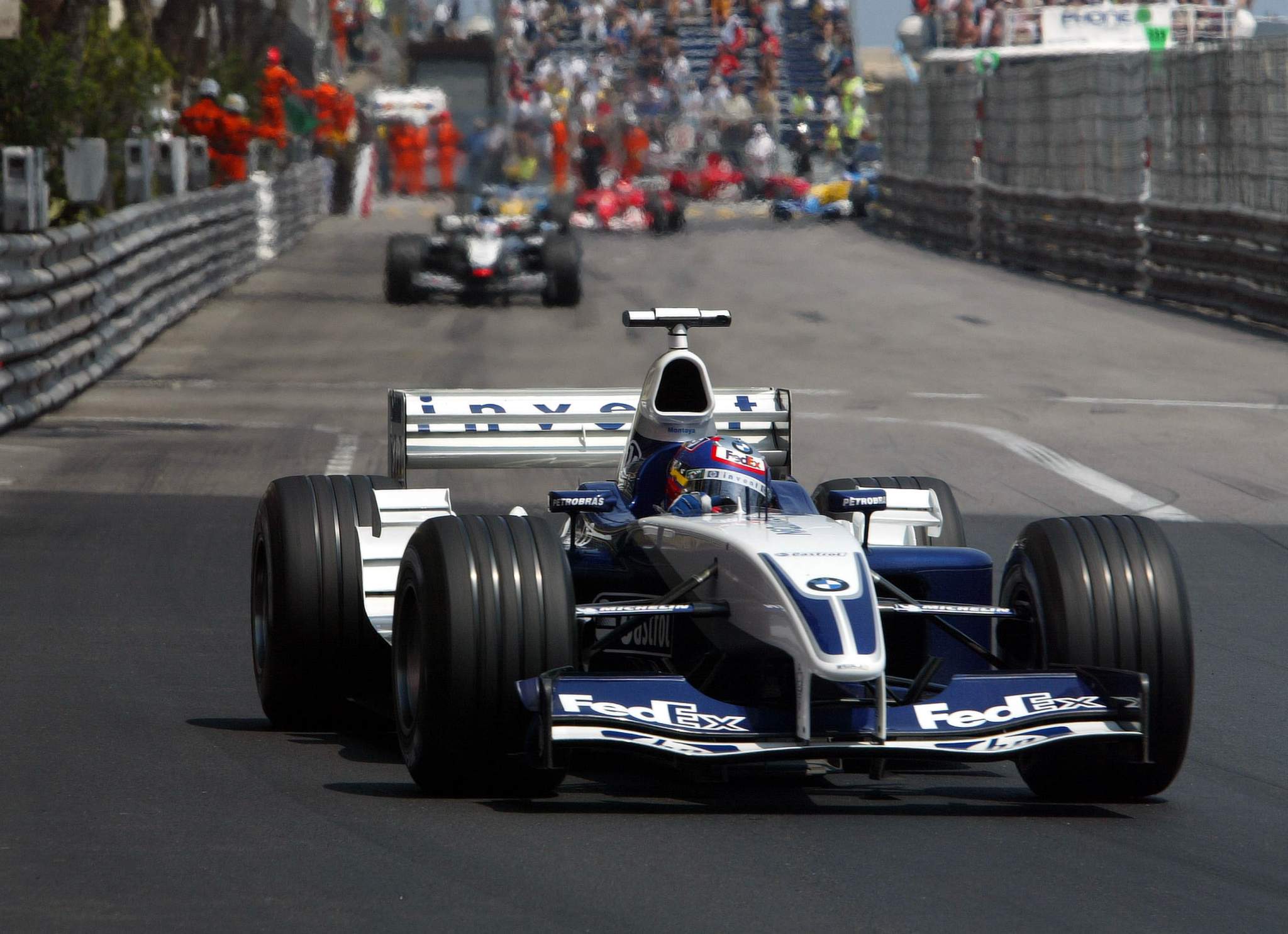
By the early 2000s Williams was the insurgent underdog, its dominant eras a fading memory.
But for a team in that role, the combination of a monster BMW engine and the monster raw talent of Juan Pablo Montoya was ideal.
While never realistically likely to beat Michael Schumacher and Ferrari to a championship (though it did come relatively close in 2003), the Montoya/Williams-BMW combination pretty much single-handedly provided entertainment in F1 across 2001/02, before Fernando Alonso/Renault and Kimi Raikkonen/McLaren got into a position to share that load in ’03.
Montoya was probably the last ‘classic Williams’ driver, embodying that spirit that Sir Frank loved so much. It was a shortlived relationship full of missed opportunities, but the highlights – mostly bold moves that got under Schumacher’s skin, but also wins of the calibre of that brilliant Monaco ’03 drive – were worth it.
LOW: PRE-SEASON 2019
Scott Mitchell
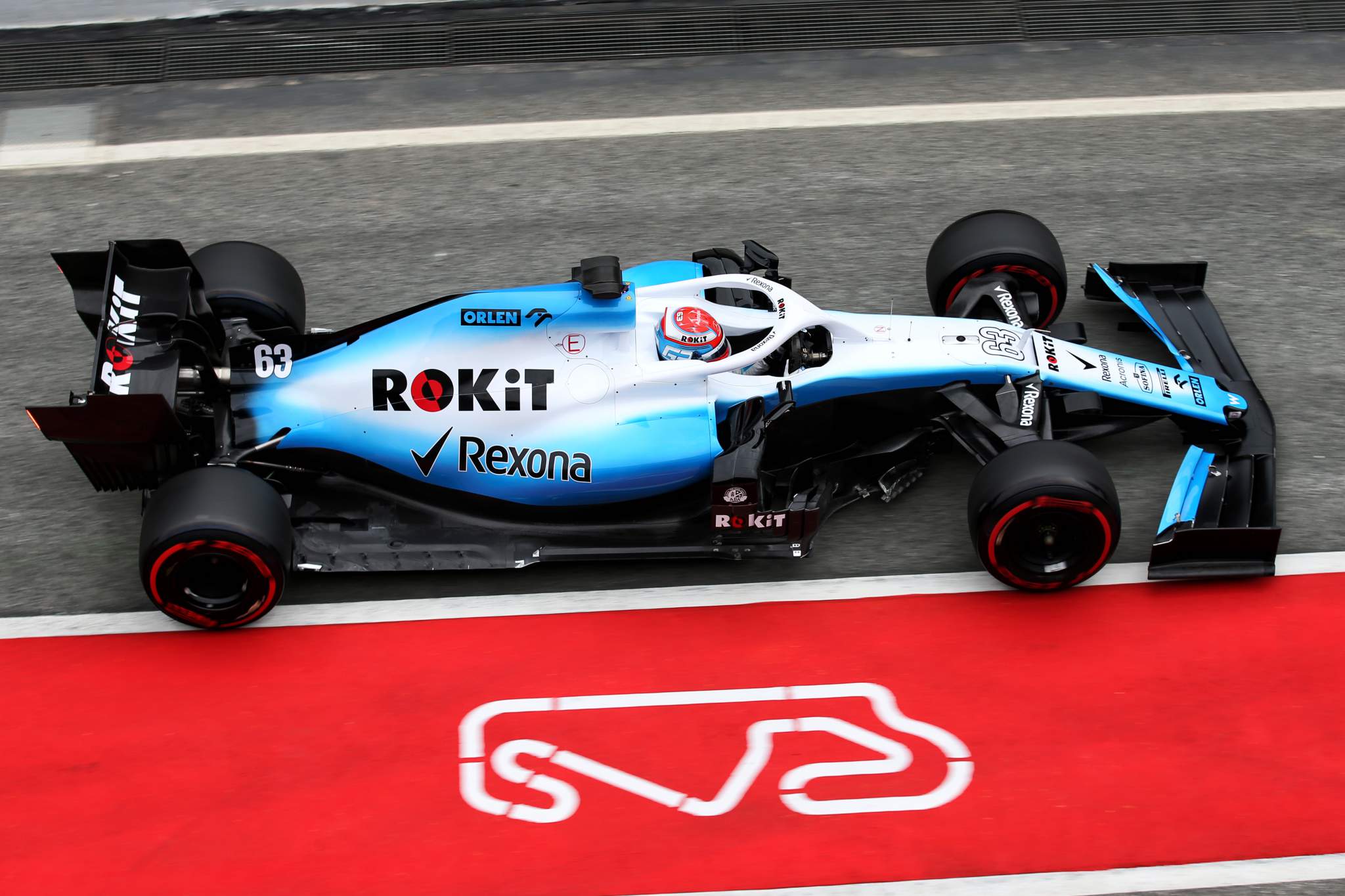
Williams’s failure to get its car ready for the start of pre-season testing in 2019 is the worst thing I’ve seen in professional motorsport.
Williams produced a car that was unfinished, awfully slow and illegal (parts had to be changed rapidly between testing and the first race).
Prior to that, the dubious dishonour of ‘worst thing I’ve ever seen’ was held by the Trulli Formula E team, which turned up to the first two races of the 2015/16 season without a working powertrain. A bizarre pantomime act was orchestrated whereby Trulli insisted it would be able to compete in Beijing and Putrajaya, to avoid breaching its contract by withdrawing, only to be denied entry because its car failed scrutineering each time.
But this was still in FE’s chaotic stage with a threadbare organisation led by an ex-F1 driver (hi Jarno!) who really, really didn’t look like he wanted to be involved anymore.
Williams’s 2019 shambles surpasses that for three reasons. First, it’s a much more serious operation. Second, there was no massive technical exercise that should’ve caught it out. Third, this is F1 – the pinnacle. What happened in pre-season 2019 was amateur-hour stuff.
It’s been a delight to see how much the team has recovered from that nadir, which is comfortably the lowest ebb I’ve ever seen a professional outfit at – and stands as Williams’s worst competitive moment in its glittering history.
HIGH: THE 1979 BREAKTHROUGH
Mark Hughes
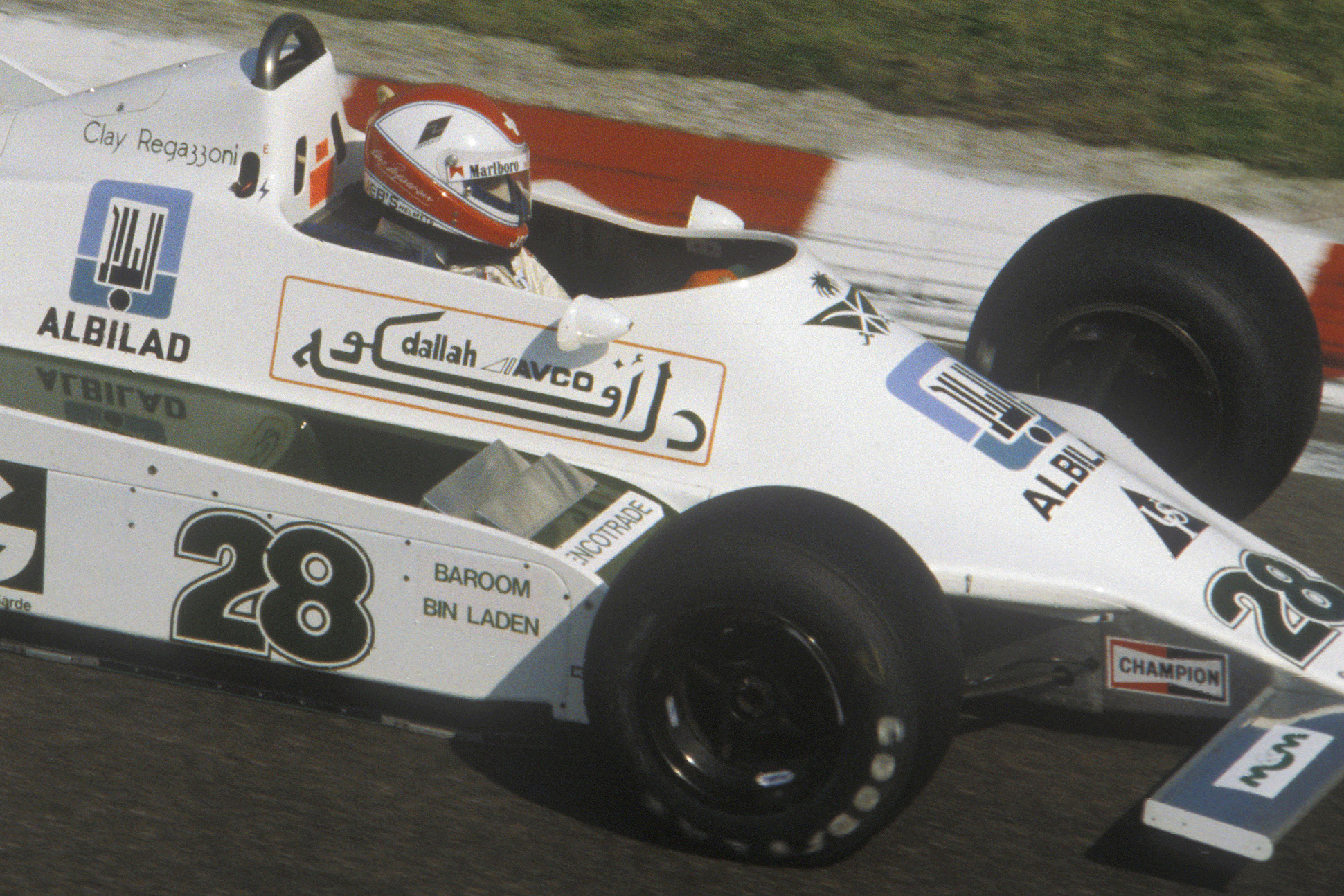
I attended the 1979 British Grand Prix at Silverstone as a fan, drove my Hillman Avenger down from the north-east, very excited at the prospect of the insane speeds the new ground effect cars had been lapping Silverstone during testing – which was about six seconds faster than when the track had last hosted the raced two years before.
The Avenger may have been rusty, but what it had going for it was reclining velour seats. Because this was to be my bed for the weekend. Parked in a tree-secluded lay-by within walking distance of the track, driving down to Towcester in the evening and using the courtyard showers of a local hotel (50p for five minutes), just opposite Lord’s Hesketh estate, the workshops of which were no longer building F1 cars, but were still busy doing rebuilds on Cosworth DFVs for several F1 teams.
There were so many prospects to be excited about in the F1 of that summer. This was such a different season to those preceding it, ground effect was shifting the ground itself. A new competitive order was becoming apparent and even such proud old names as Lotus, Tyrrell and McLaren were at risk of being washed up by the new wave coming through.
Ligier – Ligier! – had dominated the first two grands prix of the season and won another since. Renault’s crazy turbocharged gamble was beginning to pay off and just two weeks before Silverstone Jean-Pierre Jabouille had given the team its first win, almost unnoticed amid the dice-of-the-century just behind him for second place between Gilles Villeneuve and Rene Arnoux.
Then there was Williams, for so long just a backmarker name in F1, but no longer. It had begun looking serious with that beautiful little FW06 that Alan Jones had manhandled around the tracks in ’78, sometimes to thrilling – but so-far unfulfilled – effect.
Now the team had Patrick Head’s ground effect weapon, the FW07, it looked even more serious. Jones had led at Zolder in the car’s second race and Clay Regazzoni had taken a charging second in Monaco. Was it conceivable that Williams could win a grand prix? That was such a thrilling prospect.
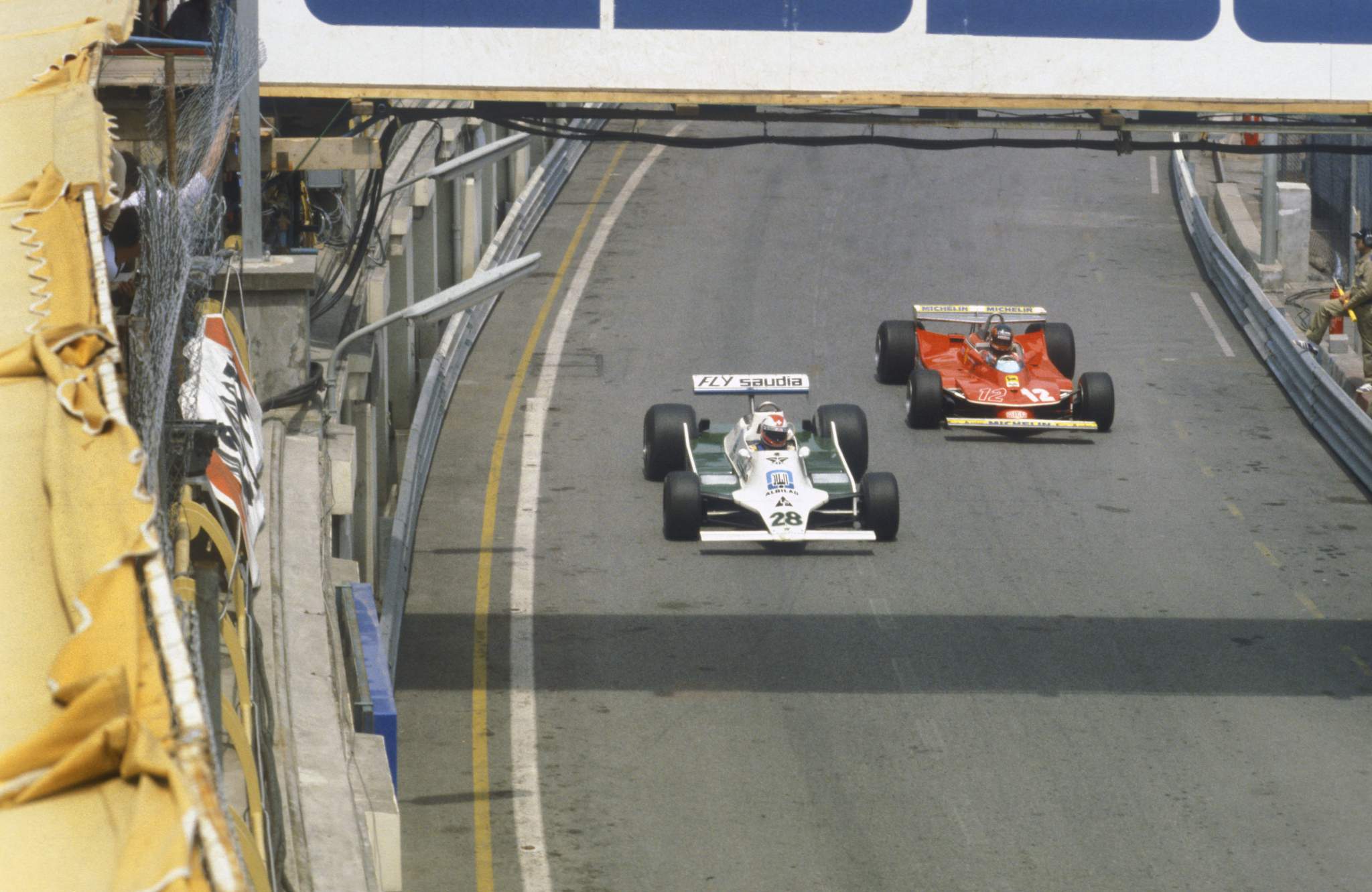
To a later generation of fan Williams might be associated with crushing dominance in the ‘90s or mid-80s. At the time of that ’79 Silverstone weekend, it was an underdog with the thrilling potential of bursting the competitive establishment apart. It was even better that Regazzoni – at 39 years old and long after it looked like his frontline career was over – was along for the ride.
So we sat in the yellow seats at Woodcote and watched them practice, the summer crop on the infield adding hay fever to the fever of the event. We wandered up to Copse. The approach speed into there of Jones in the FW07 defied belief. He got braver and braver through there, the car ever-further out-of-line between turn-in and apex until, inevitably, he lost it, hit the banking hard.
Ground effect cars, we’d been led to believe, had to be cornered on rails. Not so, it seemed. There was a whole new territory to explore once a driver became attuned to the insane leap in grip. And Jones was ground effect’s Christopher Colombus.
Come qualifying the next day and Jones was even bolder. His final lap of 1m11.88s – car seemingly almost on top of the chicane before he braked – was a freeze-frame moment of history, when it became apparent that there was actually a whole new dimension of performance as ground effect was becoming aggressively exploited and that Lotus had just been tentatively nibbling at the edges of it in ’78 (Jones’ lap was 6.6s faster than James Hunt’s pole time from ’77). But that lap also made the scale of Williams’ challenge to the establishment crystal clear.
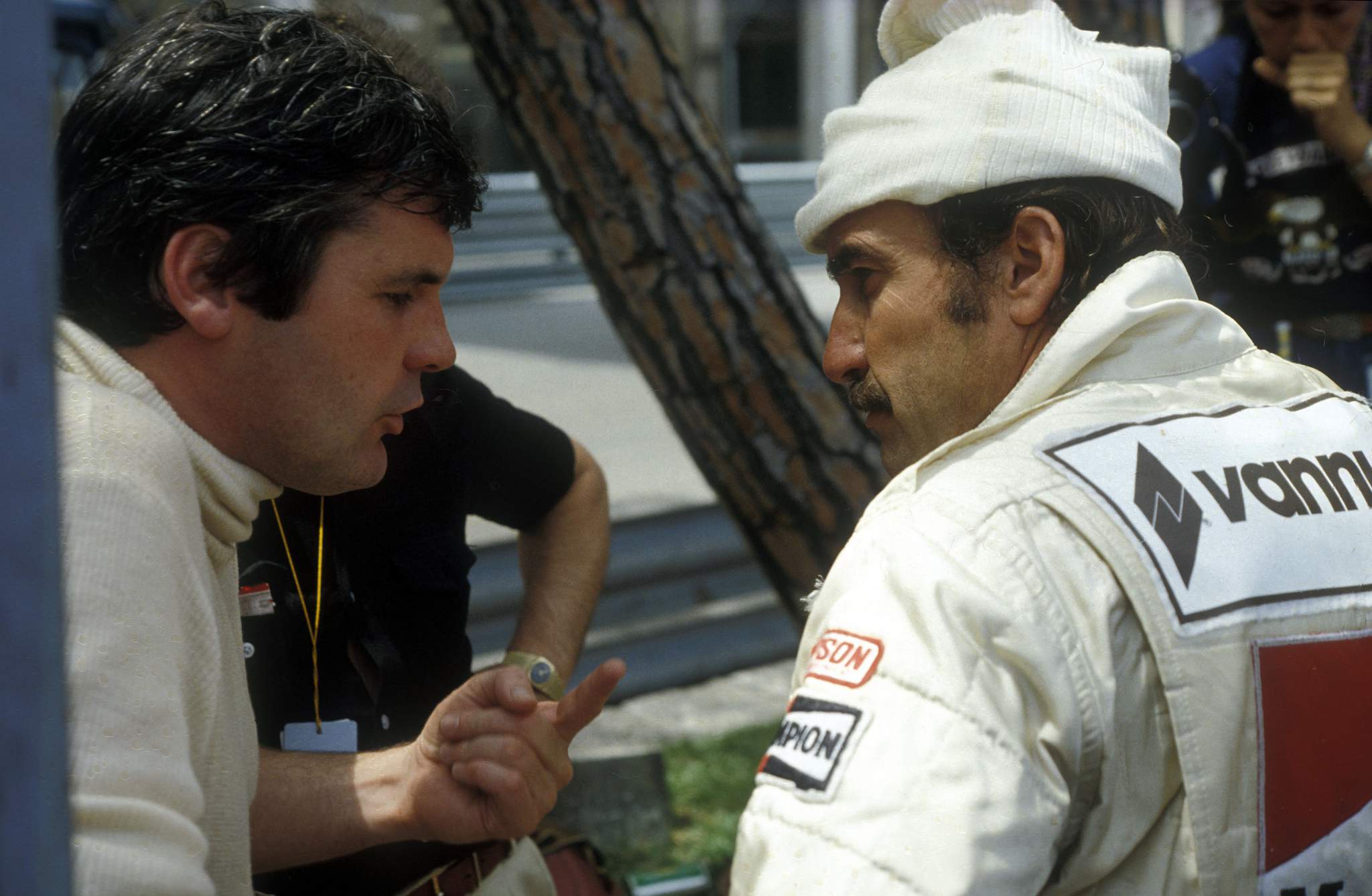
Two years earlier, the last grand prix Silverstone had hosted, Williams qualified its customer car March 26th. Now this. That’s how suddenly it came after years on the margins. Frank Williams later recalled other team personnel up and down the pitwall looking across at them, almost mouths agape. It actually felt that way in the split-second moment of that laptime being announced, from up in the Woodcote yellow seats. It put Jones on pole by 0.6s.
Surely, he’d be unbeatable on race day. Actually, not so. A dodgy weld on a water pump lost him what would have been a pulverising victory. But… here was good old Regazzoni – with the non-works DFV prepared by Hesketh and therefore not having the latest water pump – doing the perfect back-up job, and delivering Williams’ first grand prix victory. It was to be his last, so poignantly bridging the eras.
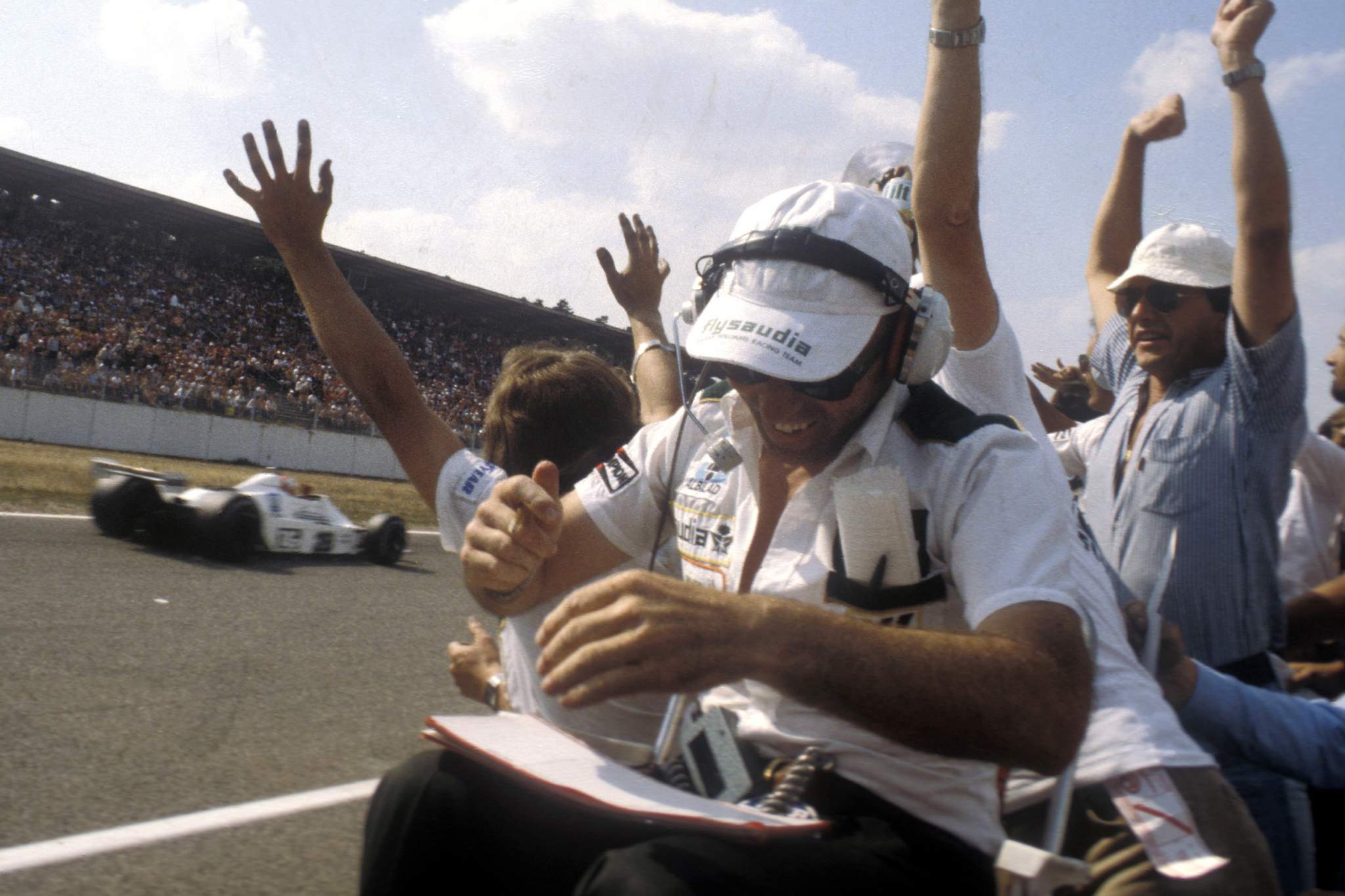
We’d no idea where this crazy wind was about to take F1, what with turbos and ground effect coming along all in a hurricane hurry and bursting open the performance bottleneck. But boy was it going to be exciting – and Williams was for sure going to be right in the centre of it all.
During the drive home in the Avenger that summer evening we talked and knew we’d seen something special, something significant.
LOW: Adelaide 1994
Glenn Freeman
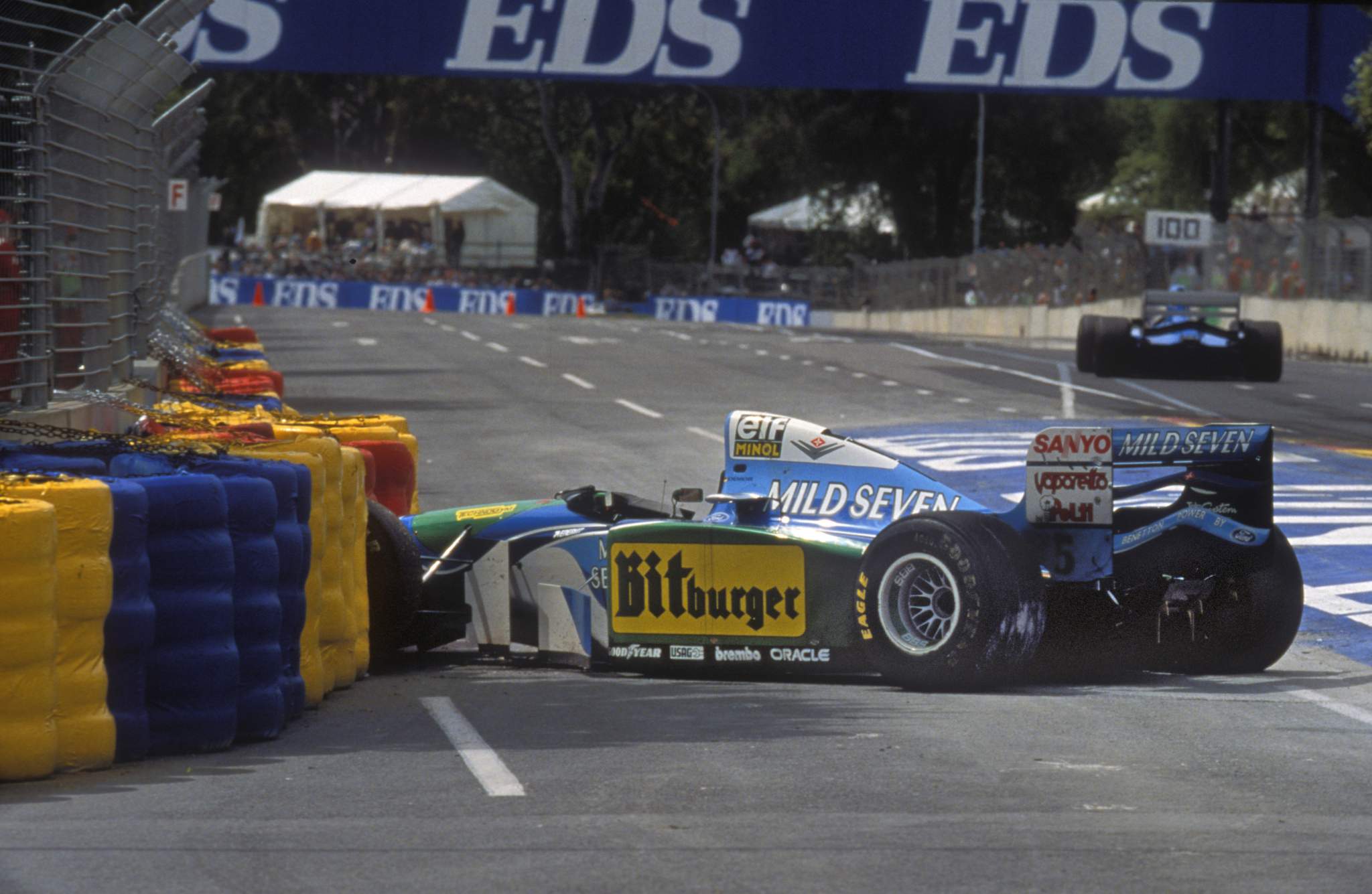
The combination of Williams and Damon Hill didn’t deserve the world championship more than Michael Schumacher/Benetton in pure sporting terms – putting all unproven suspicions about Benetton that year to one side.
But with everything that Williams went through in 1994, it would have made for an incredible fairytale ending if Hill won the title even Schumacher declared would have been Senna’s if he’d survived after Imola.
The championship being decided by Schumacher taking Hill out, rather than just a case of the best man winning on the day, made the defeat all the more painful.
It’s no surprise Williams didn’t want the post-season fuss of a protest. By then everyone just wanted to forget 1994.
HIGH: Brands Hatch 1986
Sam Smith
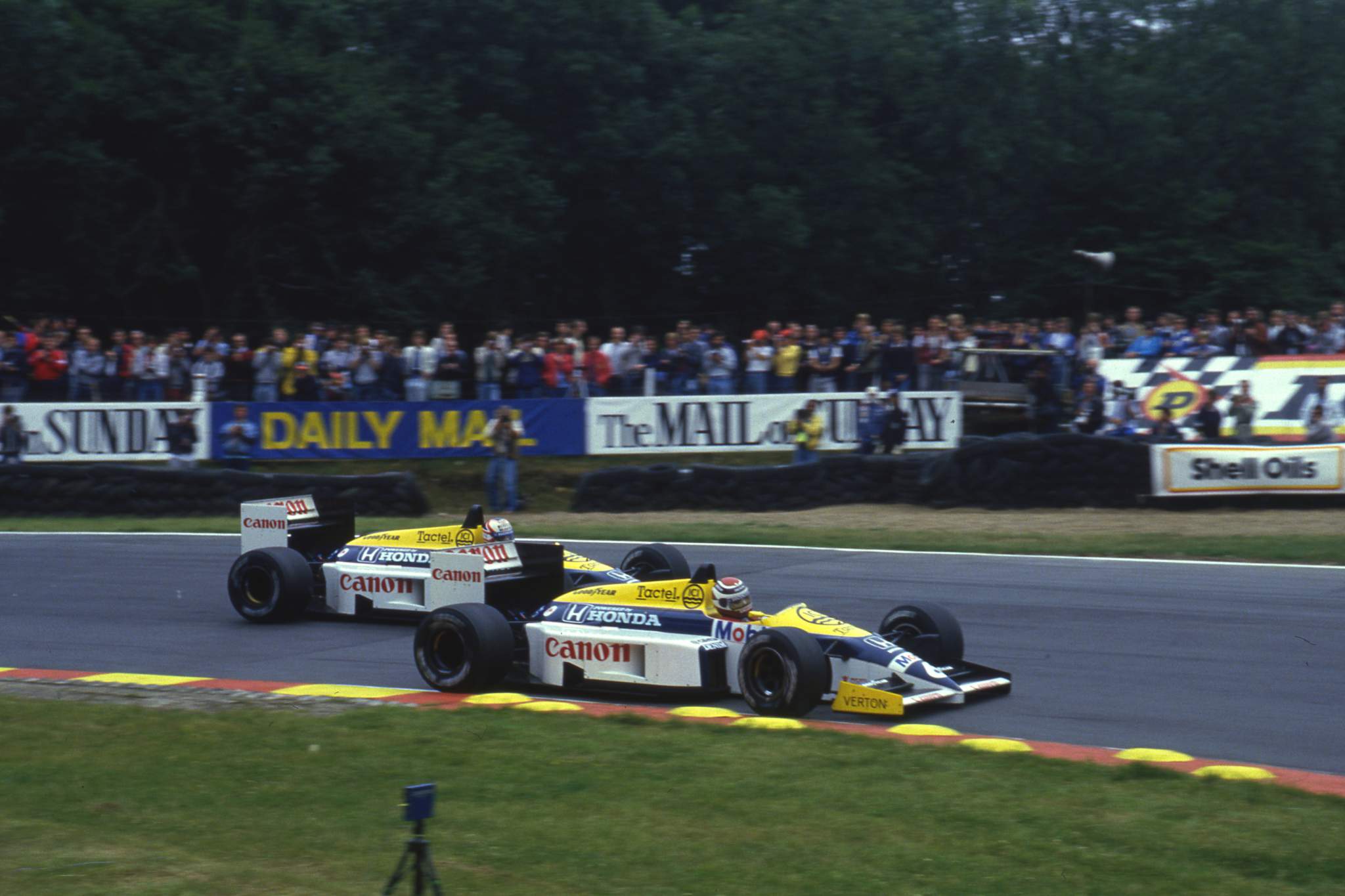
It’s quite difficult to adequately describe just how fast Nelson Piquet’s Williams FW11 approached Paddock Hill Bend on his pole lap in July 1986.
Such was the constant pull of its grenade-like Honda RA166-E that a miasma of black smoke added to the truly alarming sight of Piquet cresting the dip into the braking area on his all-or-nothing qualifying lap.
This slight haze was caused by toluene deposits in the special Mobil 1 fuel used by Williams-Honda at the time. It was derived from a tar-process residue which added a bonkers chemistry-set buzz to what is believed to have been around 1150bhp qualifying power available to Nigel Mansell and Piquet in qualifying trim.
As an 11-year-old, I crouched with my dad at Paddock, and amid the scaffolding beneath it – which gave a ground-level view, we waited for Piquet.
Such was the sight of the FW11 barrelling into the right-hander that for a fleeting moment the old man grabbed me by the scruff of the neck ready to throw me out of the way as he believed Piquet’s throttle had stuck open and he was heading straight for us.
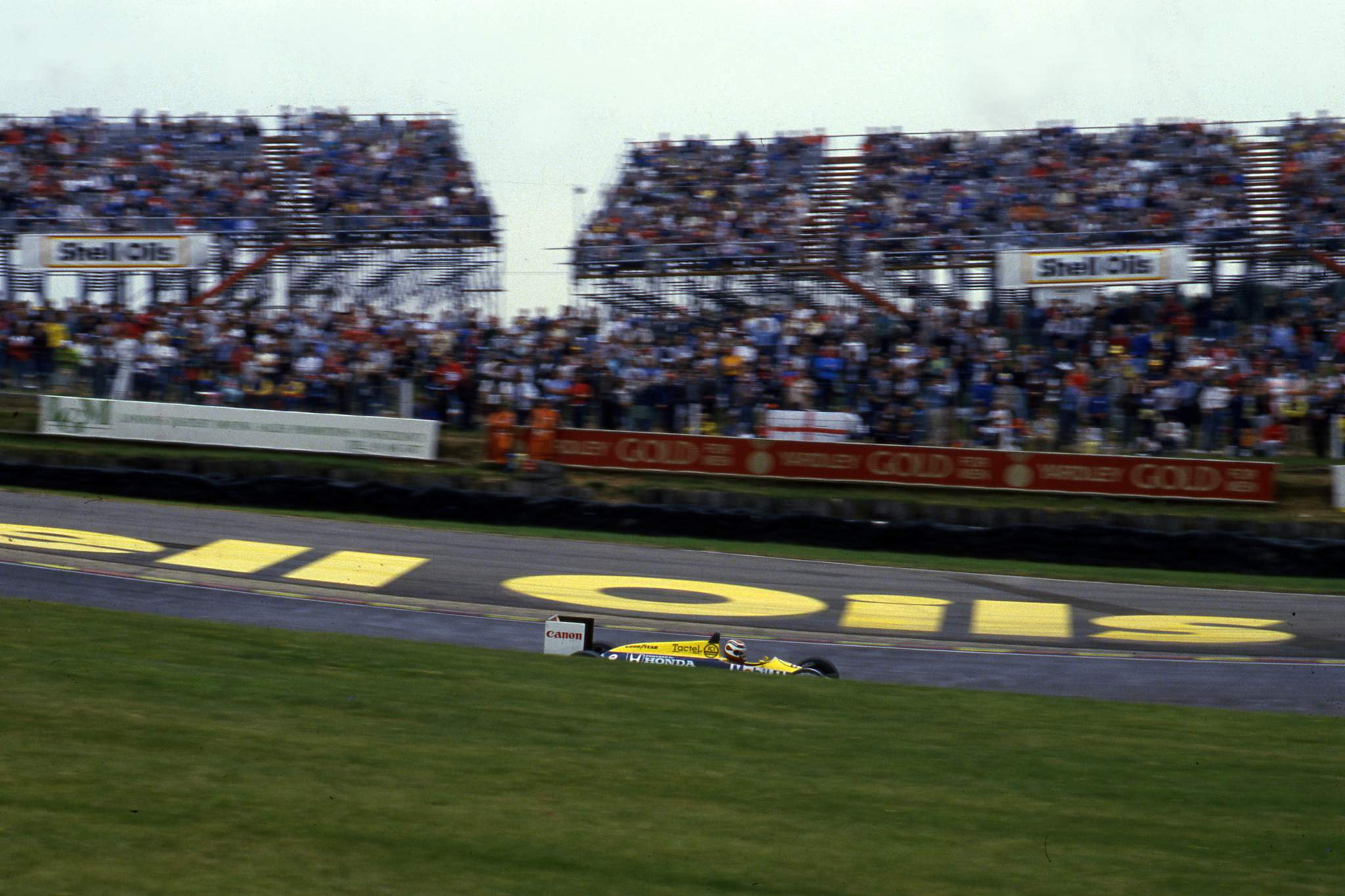
In the blink of an eye and a shower of sparks he twitched through the corner up to Druids before completing a mesmerising lap of 1m06.961s, 0.4s faster than team-mate Mansell.
The race has been well documented as Mansell went from driveshaft disaster to second-chance hero thanks to Jacques Laffite’s tibia-shattering accident against the callous railway sleepers at Paddock.
This was peak Williams. A demonstration of complete superiority with Mansell and Piquet making it a race between them and them only.
The gap to third-placed Alain Prost’s McLaren at the end of the 75-lap race was almost two minutes and Mansell’s fastest race lap was almost 1.3s faster than the McLaren-TAG Porsche.
With Mansell then leading Prost in the title and Williams 16 points ahead of McLaren in the constructors’ cup the Didcot decimation of its opposition would be absolute, or at least so it seemed on that unforgettable sultry summer afternoon in Kent.
A HIGH AND A LOW: SPAIN 2012
Edd Straw
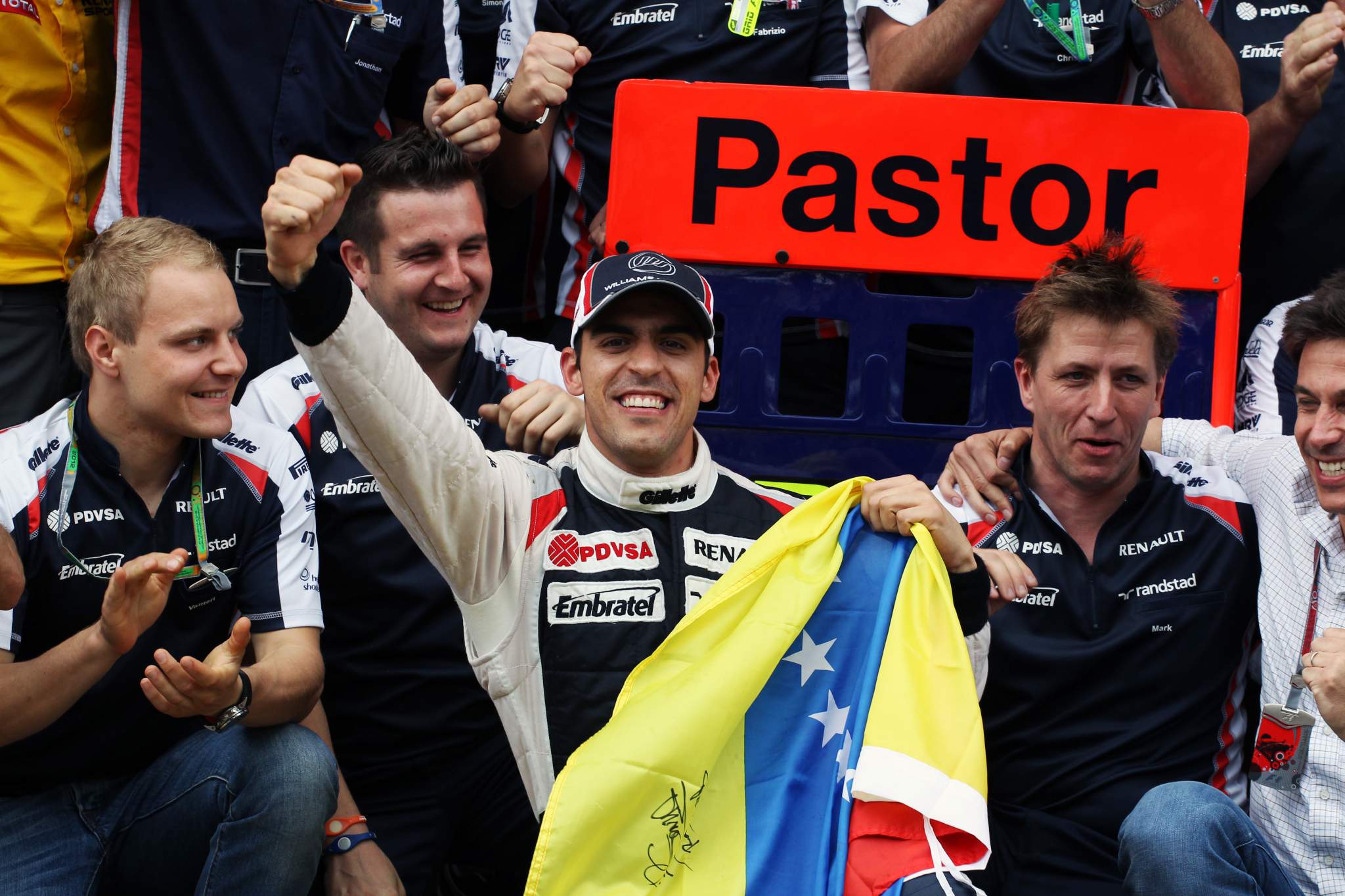
Pastor Maldonado’s win in the 2012 Spanish Grand Prix was a rollercoaster of emotions for the Williams team, hence it stands both as the best and worst memory of the great team for me.
As a fan of Damon Hill in particular in my youth, it’s tempting to pick something from that era, but having the privilege to be at the 2012 Spanish GP to cover that unlikely victory, and witness what unfolded after the race, gives it the edge.
Maldonado’s victory puzzles many to this day, but the various elements that led to it were clear. Lewis Hamilton losing pole position because he had insufficient fuel to provide a post-session sample promoted Maldonado to the front row. From there, he was able to undercut his way past Fernando Alonso’s Ferrari and hold on to take arguably the most unlikely triumph of 21st century grand prix racing.
Many factors were at play. Firstly, Maldonado was a driver capable of a searing turn of speed on occasion and it was clear that if the stars aligned for him, he could do something like this. It just seemed unlikely the stars ever would align so spectacularly!
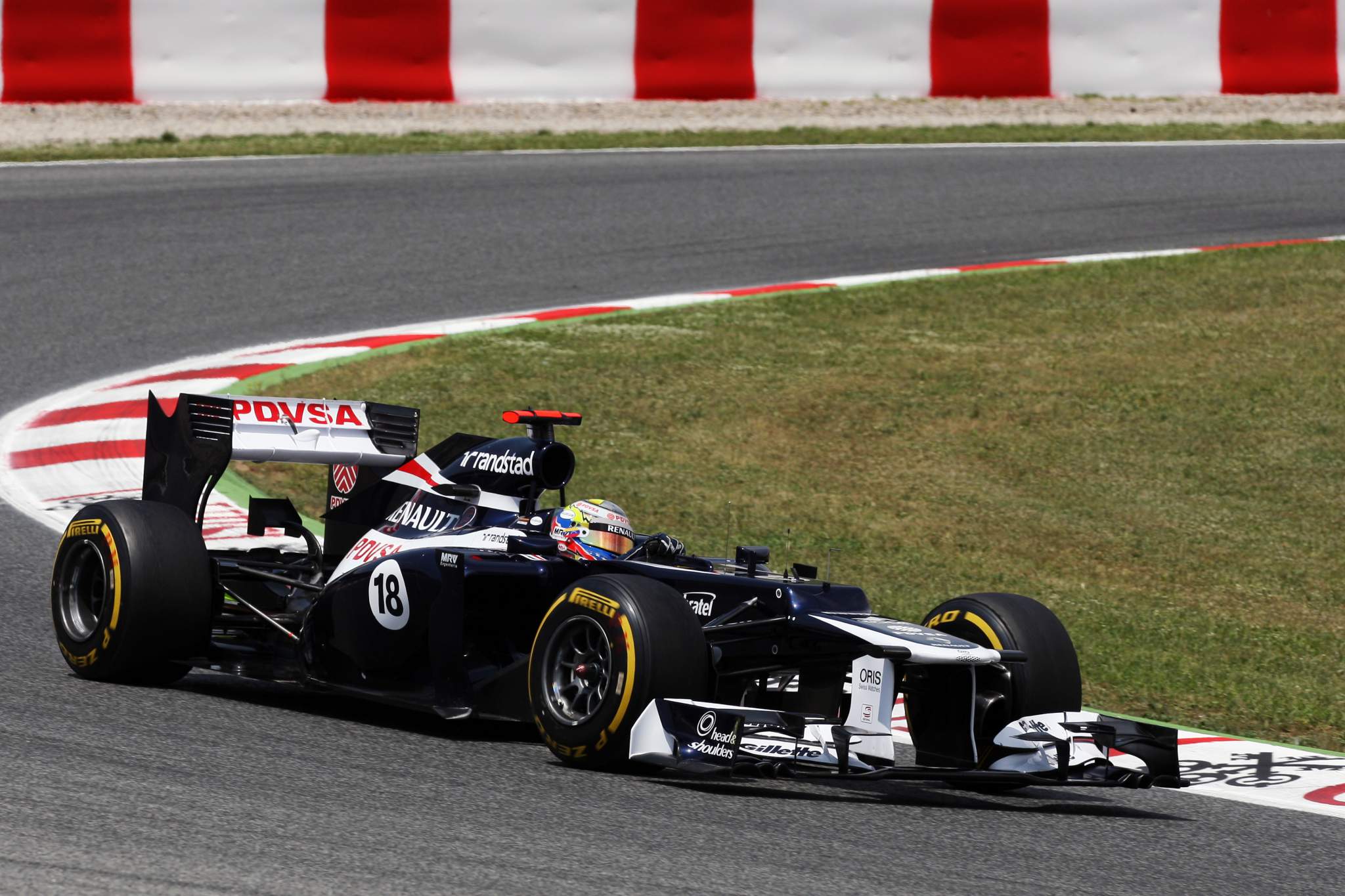
Secondly, the Williams-Renault FW34 was an extremely good car, far better than its patchy results and frankly criminal eighth in the constructors’ championship suggested. You just need to look at some of Maldonado’s other occasional stellar qualifying laps to see that – although Bruno Senna in the other car, while effective in the races, struggled badly to get his head round the tyres for a single lap.
Thirdly, this was a period of what became known as the ‘tyre lottery’. That doesn’t mean Williams had magic sets of tyres, simply that the FW34 happened to work the capricious Pirelli extremely well that weekend. The team had also put a huge amount of work into the tyre science, but having the tyres so well in the performance window was a major contributing factor.
The conspiracy-theory-minded suggest there was some trickery at play, occasionally citing the fact it was team founder Frank Williams’s 70th birthday. But while it’s true there was a celebration of this on that weekend, his birthday had actually happened almost a month earlier. Instead, it was a web of myriad contributory factors coming together. Unlikely, yes. Impossible? No.
Even so, it was a surprise to see Maldonado execute the race so well, especially after losing the lead at the start. Improbably, he got the lead back and this famously error-prone driver did not put a foot wrong under pressure from Alonso.
This was that rare thing, a Maldonado weekend close to perfection – and the timing was perfect. Given it seemed Williams might never win again, to witness the venerable team’s 114th win – over seven years since the last – was a privilege.
But things took a darker turn after the race. A mishap while draining the fuel from Senna’s car in the garage post race led to fuel vapour in the feed pipe igniting, which then almost instantly made its way to the refuelling rig. This sent a burst of flames into the garage, which at the time was full of team personnel being given a talking to by Frank Williams himself.
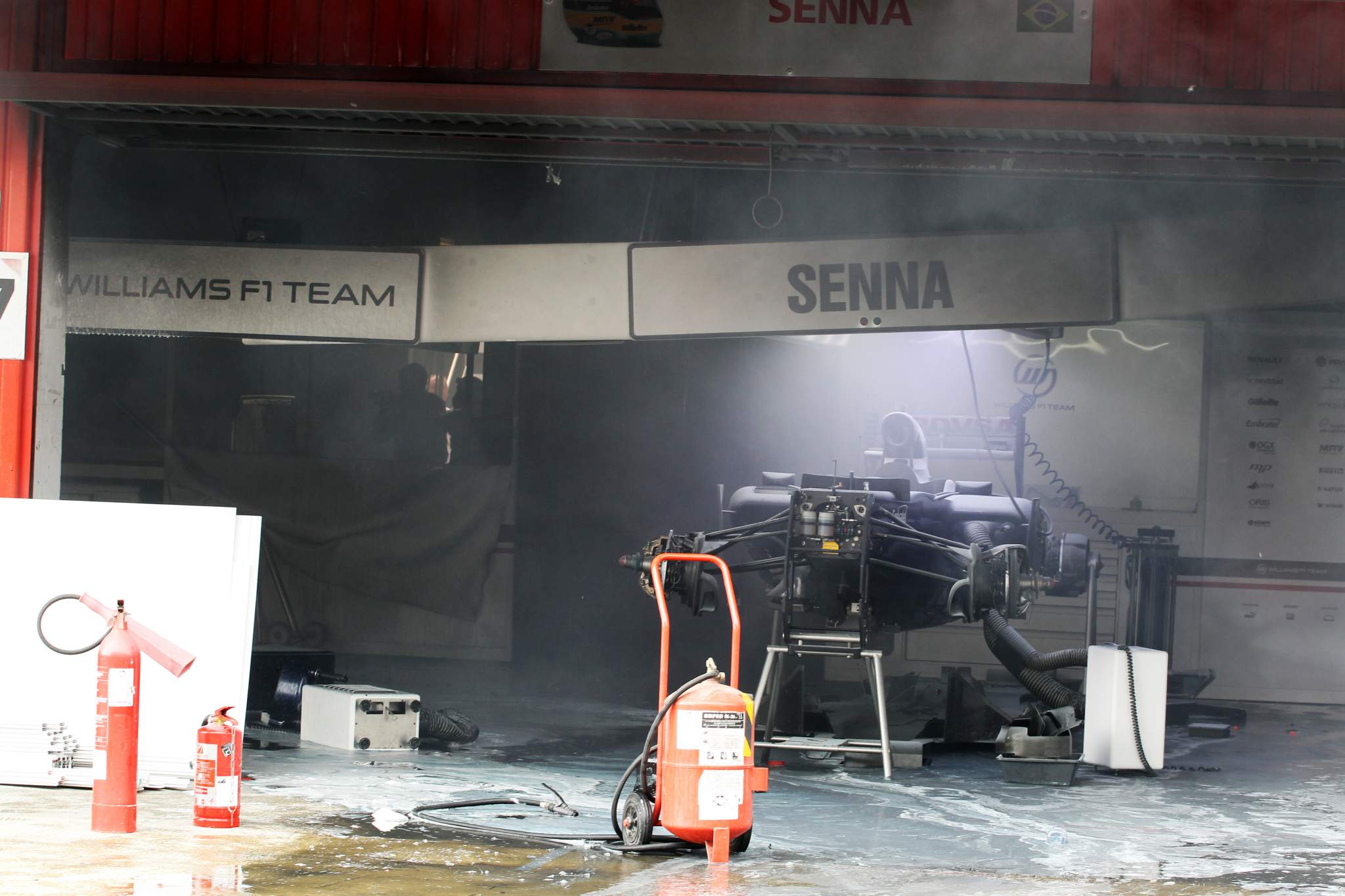
Witnessing that unfold from the Williams motorhome, which had the live TV coverage of the fire on every screen, was unforgettable, with team personnel powerless to help and with no idea whether everyone had been able to get out safely. That tense uncertainty is familiar when a serious accident occurs, but nobody expects it to happen after the race.
Thankfully, everyone escaped and the Williams team – as well as those from rival teams – managed to get the flames under control. At one stage, it seemed a distinct possibility that the conflagration might spread and consume the entire building…
The image of the victorious Maldonado carrying 12-year-old cousin Manuel Maldonado – today a racing driver in his own right – from the smoke became iconic.
LOW: The family’s departure
Rob Hansford
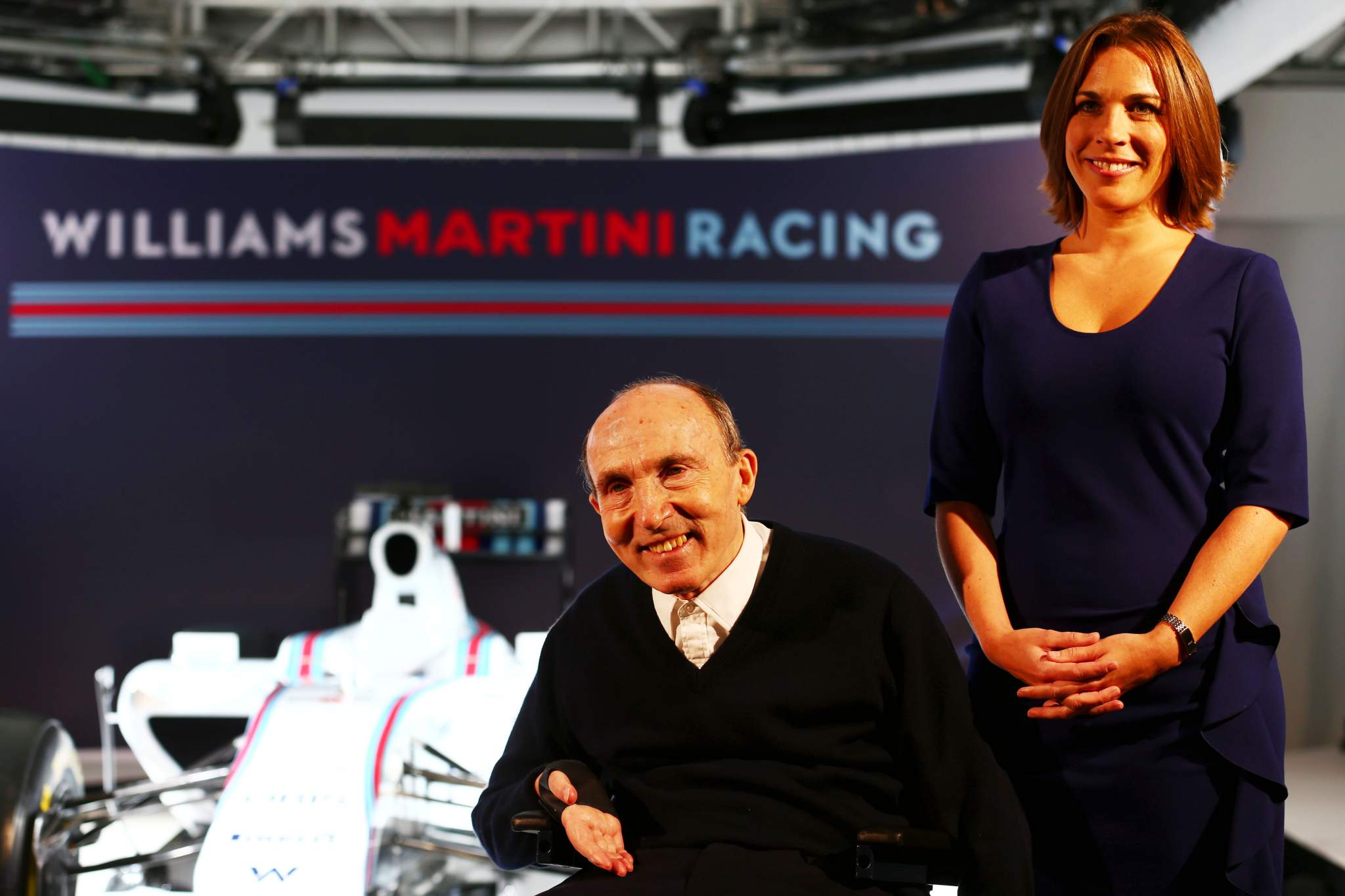
While it was ultimately the right decision in order for the Williams name to continue in Formula 1, it was extremely sad to see the family sell their beloved team and depart from the series completely.
It’s not just the team that has been a staple of F1 for so many years, but so too has Sir Frank Williams. Of course, he wasn’t as hands-on during the last few years of his reign, but it was still his team, his creation, meaning Williams was the only true old school privateer team on the grid.
Seeing him and the rest of the family leaving while the team was confined to the back of the grid and stuck in an uncompetitive state was not how their wonderful history with it should have concluded.
HIGH: JEREZ 1997
Glenn Freeman
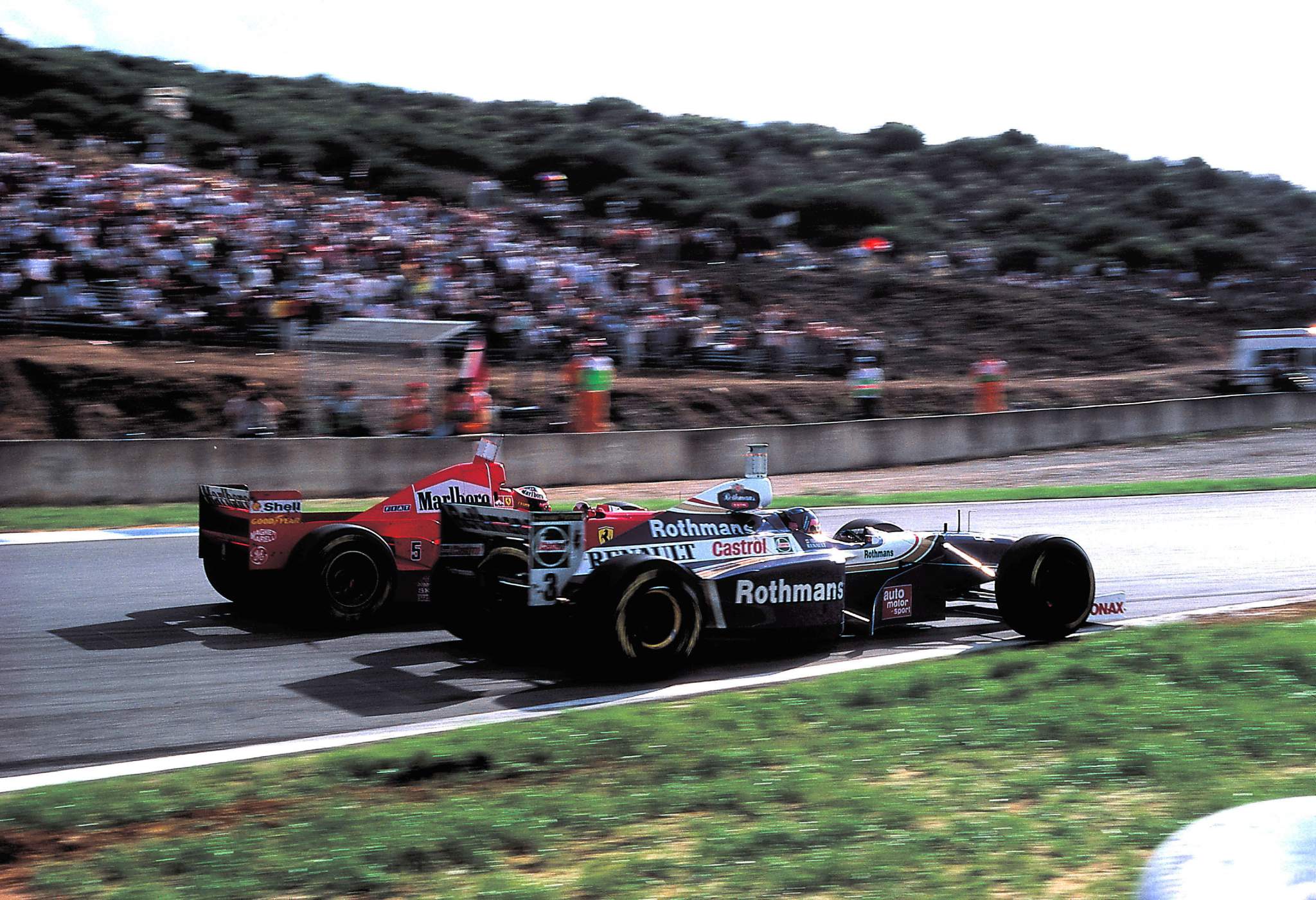
While this is chosen for personal reasons that will be familiar to listeners of our Bring Back V10s podcast, its significance in the Williams story has grown over time given it remains the team’s final world championship.
The race is remembered for the Jacques Villeneuve/Michael Schumacher collision that decided the world championship, and the bizarre Williams/McLaren agreement that resulted in Villeneuve giving up his last chance to win an F1 race. It was also the beginning of a Williams drought that stretched all the way to Ralf Schumacher’s victory in the San Marino Grand Prix early in 2001.
Before all of the shenanigans, the straight fight between Schumacher and Villeneuve was one of the best we’ve ever seen in a title decider.
Williams has never reached the heights of its Renault-powered era since, and with the French manufacturer leaving after Jerez, the end of 1997 marked the curtain coming down on the team’s 1990s purple patch.
LOW: 1988
Sam Smith
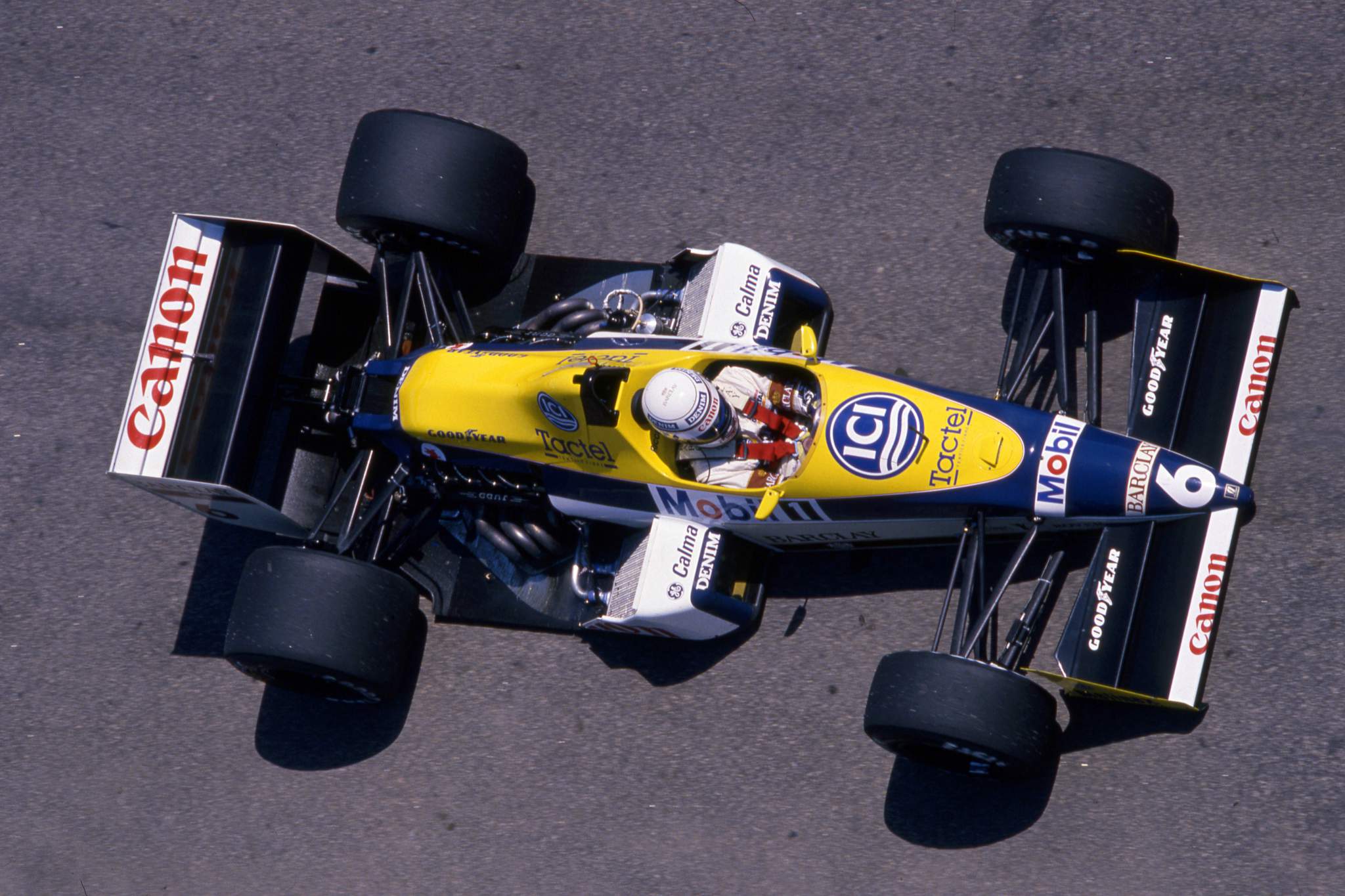
Barely 12 months after the Brands domination I’ve relived above, Williams had lost Honda engines to McLaren and Piquet to a fat-cheque-beckoning Lotus.
Yet it still had Mansell and the vast majority of the team that had created the FW11 and FW11B race winners and, for Piquet in 1987, a title-winning package.
The dawn of the atmospheric era was upon F1 and Williams chose to reconnect with John Judd after he had been an integral engineering ally in the old Cosworth DFV days.
Now set up on his own, Judd provided his new ‘CV engine’ while Williams pursued its ‘reactive suspension’ system with a young Paddy Lowe involved in one of his first big racing projects.
In truth 1988 was always going to be a stop-gap until Renault came in for ’89 but what started out in testing with great promise soon crumbled into a horrible litany of poor reliability.
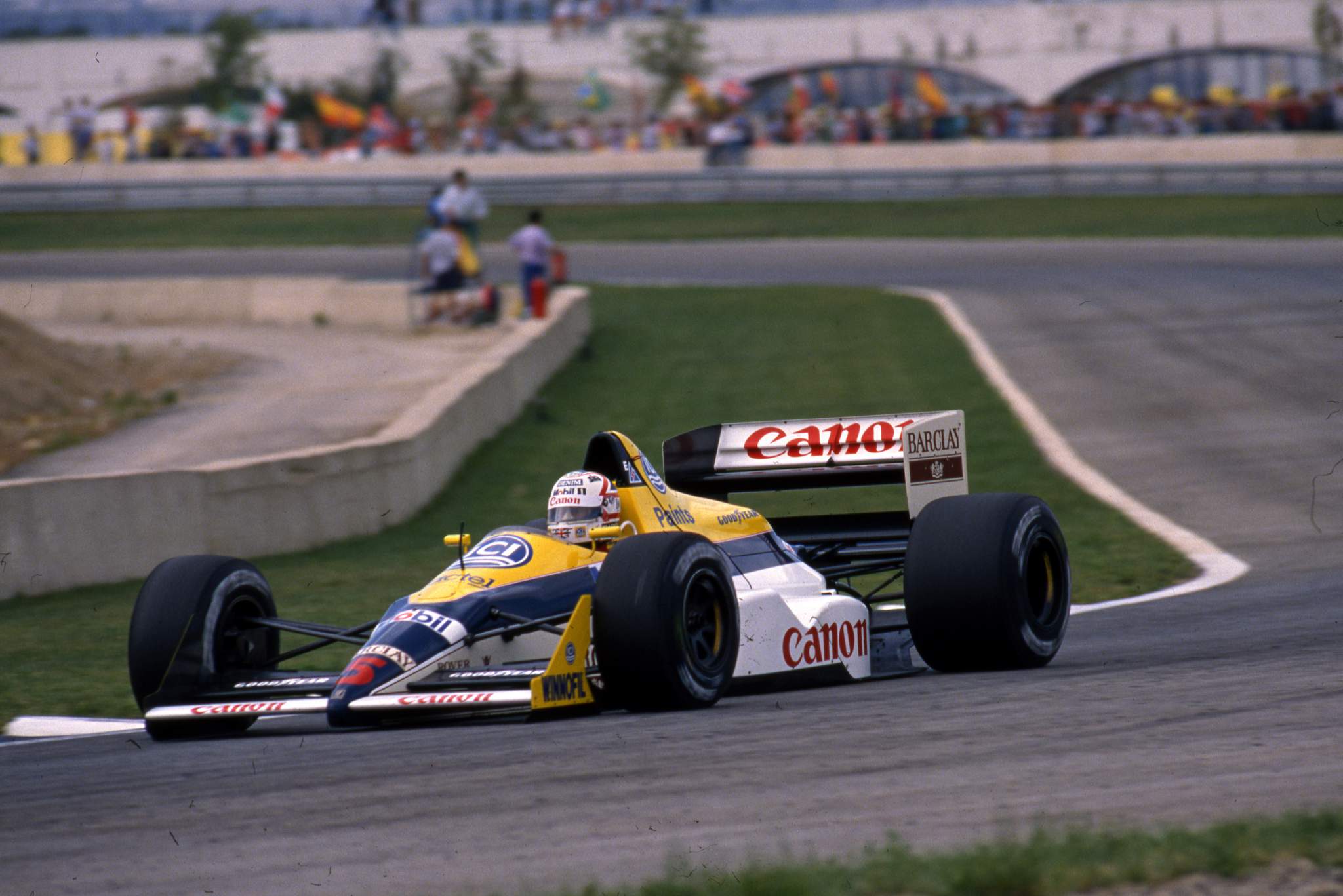
Engine issues, confused feel for drivers of the suspension and a demotivated and Ferrari-bound Mansell conspired to produce a miserly 20 points from 16 races.
It had all started so well with Mansell a heroic second on the grid at Rio, but a soggy Silverstone apart – when Mansell reverted to a conventionally sprung FW12 and netted a hard-fought second – the season was a debacle, reaching a nadir at Monza when Riccardo Patrese was 3.5s off Prost’s pole and an F1 cameo making Jean-Louis Schlesser was an eye-watering 5.6s off the pace!
The FW12 was not a complete disaster but in the context of what had come before from 1985-1987, Mansell and Patrese finishing in the top six on just seven occasions between them was a paltry return for a team of Williams’s stature in the decade that established its legend.
HIGH: AN F1 TEAM RUNNING LAGUNAS
Scott Mitchell
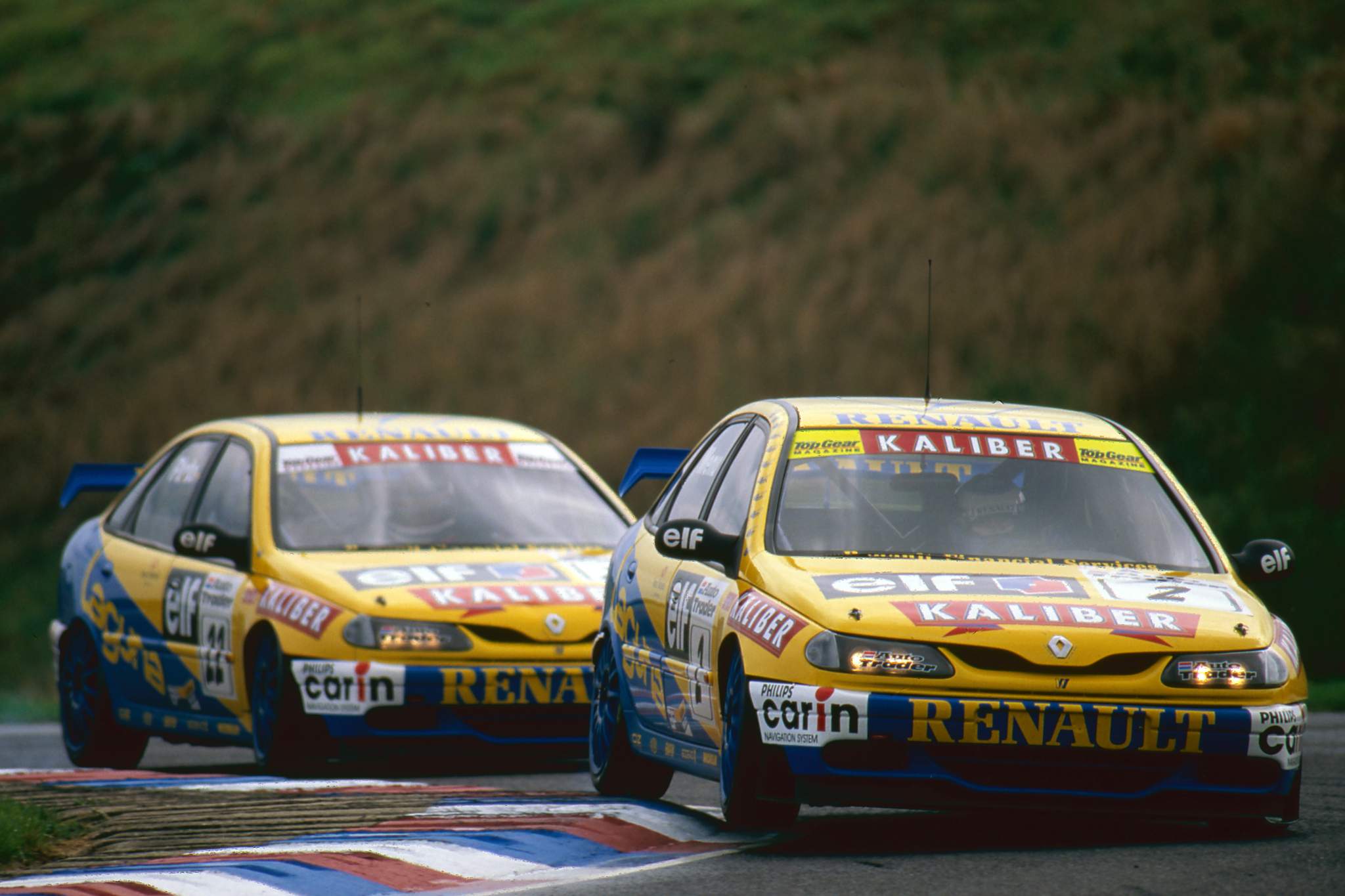
(Image courtesy of Jakob Ebrey)
My best Williams memory is my first one. And, a little awkwardly given the milestone we’re celebrating here, it’s not from one of its 749 prior grand prix starts. But it did play a part in me understanding the scope of Williams’s success.
Time tends to make a mockery of such memories so I don’t know when this would’ve been, but my dad brought back BTCC season review video tapes from 1994-1998 and I binge-watched them. All I know is I watched those seasons on delay by a few years!
The blue-and-yellow Williams Renault Laguna from the 1995 British Touring Car Championship must be among my first ‘favourite cars’. It was quickly replaced by the yellow-and-blue Lagunas from ’96 and ’97! Learning that the Renault BTCC team/cars were run by Williams F1 made it sound so BIG. Like the others didn’t stand a chance.
I’m pretty confident I had no idea what Williams was before falling in love with those Lagunas. I’d have paid little attention to F1 before I started karting myself in 2002, by which point Williams would have been sniping at Ferrari in its BMW era – but a few years past its peak.
So my first association with Williams was as a slightly mythical, giant operation that built/ran my favourite cars.
By the time F1 itself actually mattered to me and I started following some of those 749 grands prix, Williams wasn’t nearly as successful as it had been previously.
But as an organisation it had already had a pretty big impact on my early life as a racing fan.
LOW: Zanardi’s failure
Matt Beer
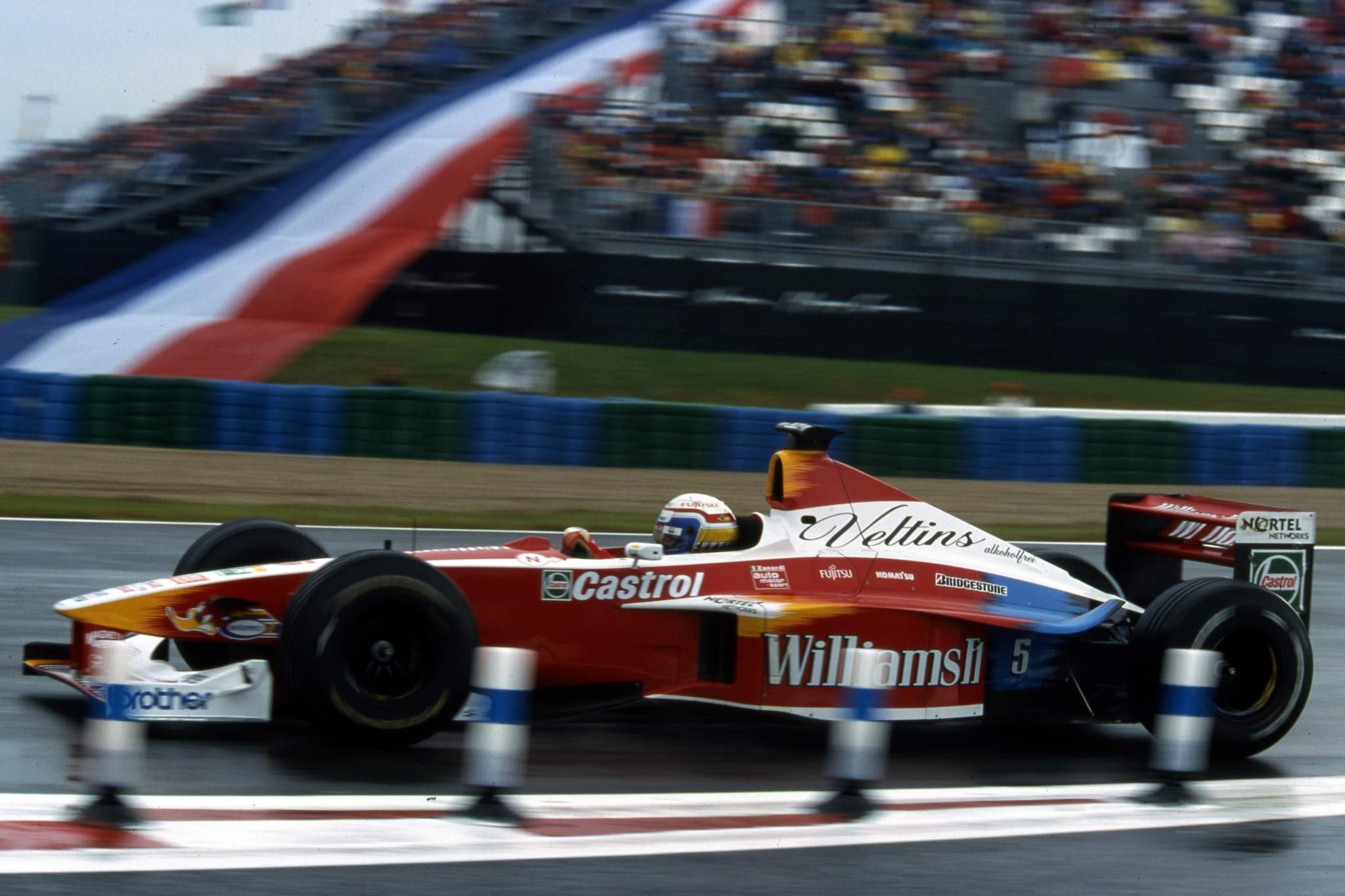
Having spent 1996-98 mostly cheering for Jacques Villeneuve + Williams in F1 and Alex Zanardi + Ganassi in CART (with a side order of cheering for Greg Moore in CART too, doing some A levels and making it into pubs), I naturally liked the concept of Zanardi + Williams in F1.
But as much as I, frankly, worshipped Zanardi in those years, I wouldn’t say I was absolutely convinced it would be a success. With Renault’s works support gone, Williams was waning by the time Zanardi arrived for 1999. I hated the narrow cars/grooved tyre F1 rules and had a feeling Zanardi might too. A string of evocative David Tremayne articles in Autosport through ’98 swayed me into believing that Zanardi’s combination of technical intuition and racing spirit would revitalise Williams and bring wheel-to-wheel entertainment back to F1. But it was still more hope than expectation.
I still never imagined that it would be as bad as it was. Zero points. Perhaps even worse, zero moments where Zanardi looked anywhere near as enthralling as he had in America. Floundering so desperately he was swapping carbon brakes for steel ones trying to find some kind of affinity with the car. Sacked at the end of the year in favour of Jenson Button.
Zanardi + Ganassi + mid-90s CART rules was a perfect right person, right package, right time combination that created beautiful magic. Zanardi + Williams + late-90s F1 rules was the painful opposite.
HIGH: HILL’S 1996 TITLE
Rob Hansford
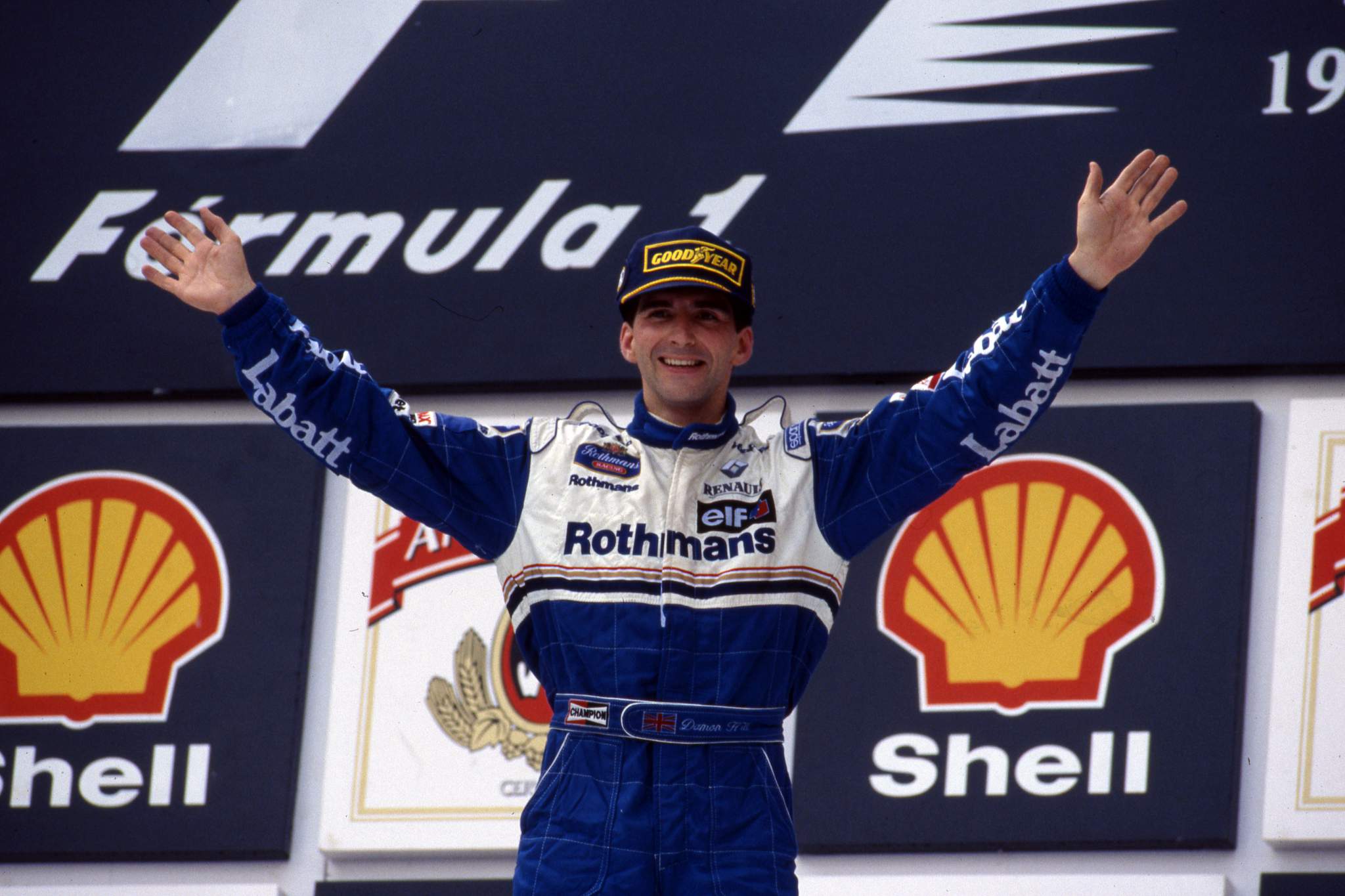
For me, seeing Damon Hill win the 1996 world championship was the ultimate Williams high point.
They’d had to endure a bitter battle with Schumacher and Benetton for the two seasons prior and they came off second best both times. And while Schumacher was clearly the fastest driver in 1995, the nature of the ’94 defeat was painful.
But in 1996 Williams hit perfection in a similar manner to 1992 and completely controlled the season.
It won the constructors’ title by 105 points and while it successfully defended that crown in 1997, it was in a far less comfortable fashion.
Williams never dominated in that manner again after ’96. In my mind it was the last true major achievement for Williams and the image of Hill crossing the finish line at Suzuka to clinch his one and only world championship title is still etched vividly in my mind to this day.






